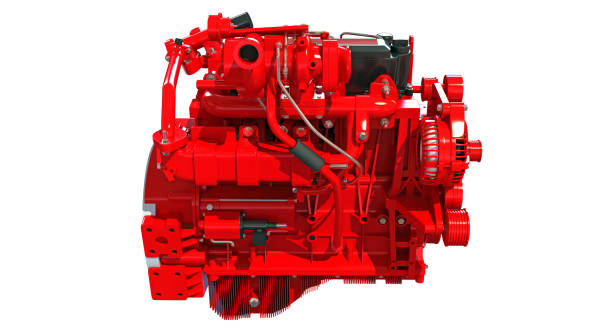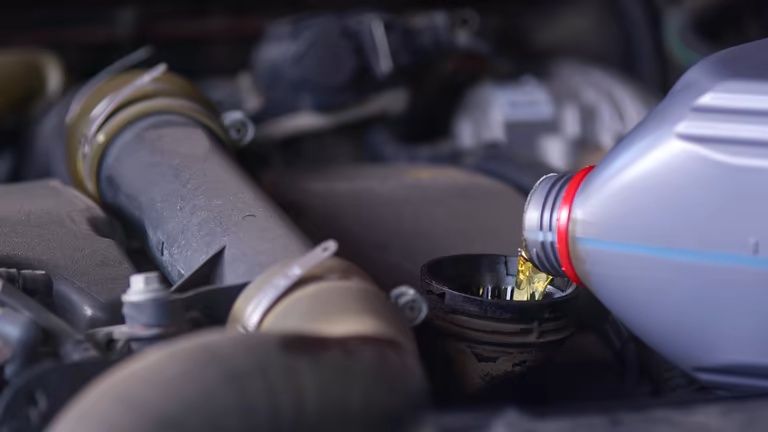How Much Oil Does Your 6.7 Cummins Take?
When many 6.7L Cummins diesel engine owners are undergoing oil change and maintenance, the first question that comes to mind is: “How much engine oil do I actually need to add?” It seems that the answer can be found online very quickly – 12 quarts. But does this figure really apply to all situations? If you are seeking a precise and practical answer, it is worth delving further into the content hidden behind this number.
Due to differences in vehicle models, years, types of engine oil, whether the filter has been replaced, and even driving environments, the actual required engine oil capacity may be slightly adjusted. A standard oil change operation is not merely about simply “filling it up”, but more importantly, it is about filling it correctly.
What Is The Standard 6.7 Cummins Engine Oil Capacity?
Let’s start with a table:
| Year Range | Vehicle / Engine Version | With Oil Filter | Capacity (US Quarts) |
| 2007.5–2012 | RAM 2500/3500 (6-speed manual/auto) | Yes | 12 qt (11.4 L) |
| 2013–2024 | RAM 2500/3500/4500/5500 | Yes | 12 qt (11.4 L) |
| Special Cases | No filter change or additional cooling systems | Varies | 10.5–13 qt |
In most cases, the required oil capacity for RAM heavy-duty pickup trucks equipped with 6.7L Cummins diesel engines (such as RAM 250/3500/4500/5500) is:
12 quarts (approximately 11.4 liters), including the replacement of the oil filter.
This capacity has remained relatively stable since its first introduction in the 6.7 Cummins in mid-2007.5, and has been largely consistent in mainstream models since 2013. However, it should be noted that when the filter element is not replaced, only about 10.5 to 11 quarts need to be added, and the actual difference is close to 1 quart.
In addition, if your engine has been modified, such as by installing an oil cooler, a large-capacity filter or other accessories, the total fuel volume may also increase to 12.5 or even 13 quarts.
Therefore, even if there is a standard answer, whether it is ultimately filled up or not should still be judged based on the reading of the dipstick.

Does The Different Types Of Engine Oil Affect Capacity?
The type of engine oil (such as fully synthetic, semi-synthetic, and mineral oil) itself does not change the engine’s refueling capacity. However, it will have a direct impact on the operating condition of the engine, the oil change cycle, the lubrication effect, etc. The type of engine oil chosen is directly related to the engine’s lifespan and usage cost.
1. Fully Synthetic engine oil
- Advantages: Strong high-temperature stability, good low-temperature fluidity, slow oxidation and decomposition, and excellent protective performance
- Applicable scenarios: High-load operations, frequent starts and stops, extreme temperatures
- Disadvantages: High price, and for old vehicles with severely aged seals, there may be a risk of oil leakage
2. Semi-Synthetic engine oil
- Advantages: Its performance lies between that of fully synthetic oil and mineral oil, and it offers a relatively high cost performance
- Disadvantages: Limited service life, requires frequent replacement, generally recommended for 5,000 to 7,000 miles

3. Mineral oil
- Advantages: Low price, suitable for old vehicles
- Disadvantages: Poor high-temperature shear resistance, short lubrication life, and frequent replacement (3,000 to 5,000 miles)
Although the type of oil does not change how much oil you need to add, it will determine how often you need to change it again and whether the engine performs stably under load or harsh conditions.
Does The Viscosity Grade Have An Impact On The Oil Volume?
The selection of engine oil viscosity will not directly affect the total filling volume. However, it has a significant impact on the flow resistance of the internal oil circuit of the engine, the lubrication efficiency and the smoothness of starting.
| Viscosity Grade | Recommended Climate | Features | Common Brands |
| 15W-40 | Normal to hot climates | High protection under heavy load | Shell Rotella T4, Valvoline |
| 5W-40 | Cold climates, synthetic | Great cold start flow, full temp coverage | Mobil Delvac 1, Amsoil |
| 10W-30 | Mild climates, light-duty | Better fuel economy, slightly less robust | Chevron Delo 400, Shell Rimula |
Improper selection of viscosity can lead to problems such as difficult starting, abnormal oil pressure, and accelerated wear, especially in scenarios of towing, off-road driving, and long-term high-load driving.

How Much Oil Will Be Lost If The Filter Element Is Replaced Or Not?
The existence of the oil filter element is not only to filter impurities, but also to retain a portion of the old oil. If the filter element is not replaced, the amount of oil added will naturally decrease, and at the same time, the cleanliness and performance of the overall lubrication system will also be reduced.
| Oil Change Type | Recommended Fill Amount |
| Oil + Filter Change | ~12 quarts |
| Oil Change Only (no filter) | ~10.5–11 quarts |
| With oversized filter installed | ~12.5–13 quarts |
Therefore, replacing the filter element each time the oil is changed is not only a maintenance recommendation but also a key factor affecting the accuracy of oiling.

Other Factors That Influence Oil Capacity
In addition to the above points, there are several factors that cannot be ignored and may also lead to differences in engine oil capacity:
- Different models and years: The early version has slight structural differences from the engines under the new generation of emission control systems (such as EGR, DPF)
- Whether to install an external oil cooler, turbocharger upgrade kit, etc
- Use non-original or large-capacity filters (such as Fleetguard LF16035)
- Incomplete oil drainage and failure to remove residual oil may also lead to errors
If you are not sure whether the modification will affect the capacity, it is recommended that you record the amount of oil drained during the first oil change and the reading on the dipstick after refilling for future reference.
How To Ensure Accurate Oil Capacity?
Even if you are using the brand and viscosity of the engine oil recommended by the manufacturer, the details during operation still determine the final effect:
- Let the vehicle cool down before starting and park it on a flat ground
- Remove the oil drain screw and thoroughly drain the old oil (wait for at least 10 to 15 minutes)
- Replace the new filter, lubricate the sealing ring and tighten it manually
- Initially add about 11 quarts of new oil
- Start the engine for 10 seconds and then turn it off. Let it stand for 5 minutes
- Check the dipstick and add oil in batches until the oil level approaches the upper limit mark
It is strictly forbidden to fill up 12 quarts at one time. Reserving space for fine-tuning can better ensure the balance of the engine lubrication system.

Final Thoughts
Although the oil capacity of most 6.7L Cummins engines is 12 quarts, this figure is just the starting point, not the conclusion. Each car owner should make a comprehensive judgment based on factors such as the model year of their vehicle, usage scenarios, type of engine oil, and maintenance habits.
Choosing the right type of engine oil, following the correct oil change process, and keeping a close eye on the oil dipstick reading in real time are the best ways to protect the engine. An accurate refueling operation is not only a guarantee of performance but also an investment in reliability.
Longshine focuses on providing dependable replacement parts for the 6.7L Cummins engine. Welcome to contact us for further details or cooperation.
